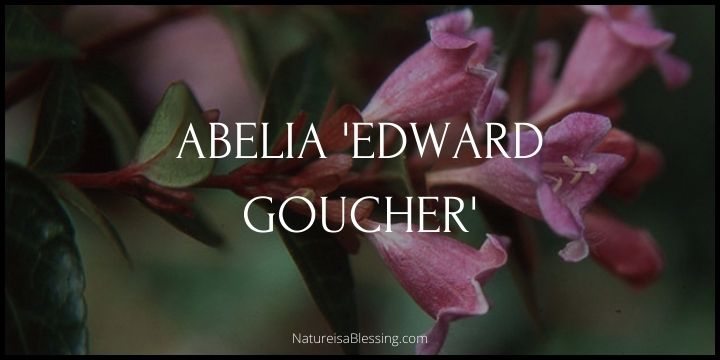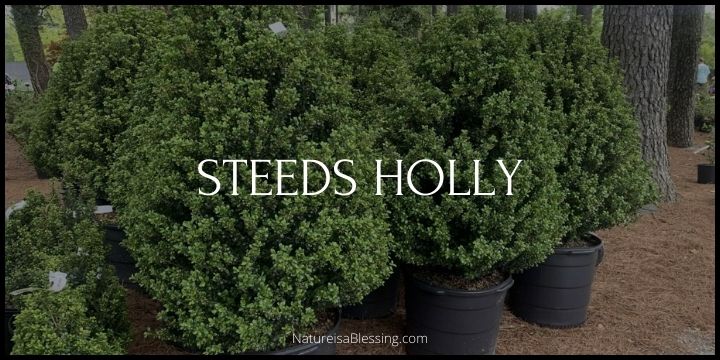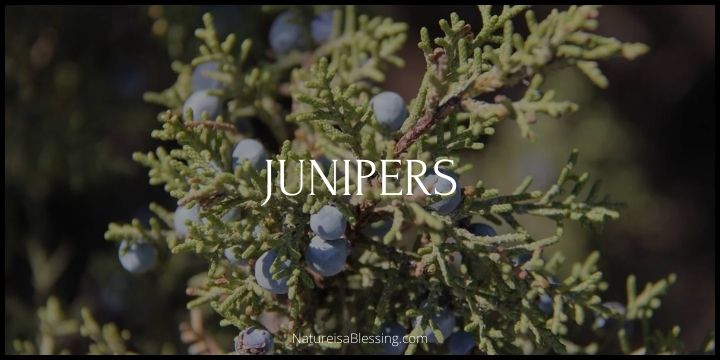Snowball Bush: How to Plant, Grow, and Care
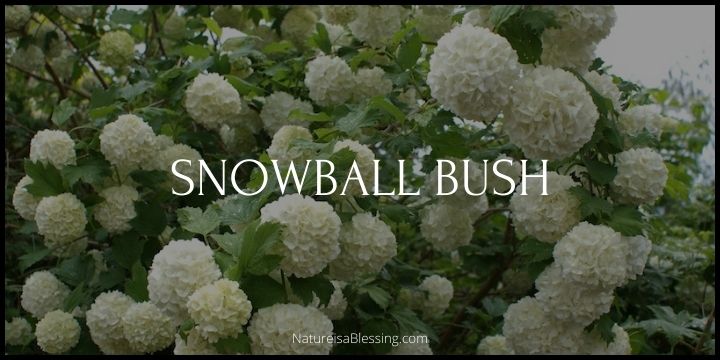
What is Snowball Bush?
The Snowball Bush, scientifically known as Viburnum opulus ‘Roseum’, is a captivating plant that has been a garden favorite for centuries. Renowned for its large, globular, pure white flower clusters that often reach the size of a softball, it’s easy to see how it earned its snowball moniker. Each cluster consists of numerous tiny flowers, creating an effect reminiscent of a winter snowfall even in the heart of spring or early summer when the bush typically blooms.
Native to parts of Europe, Asia, and Northern Africa, the Snowball Bush is a hardy, deciduous shrub that can grow up to 12 feet tall and wide. Its appeal isn’t limited to its show-stopping blooms. The plant also features maple-like, dark green leaves that turn stunning shades of red, orange, and purple in the fall, adding another layer of visual interest.
In addition to its aesthetic allure, the Snowball Bush is also valued for its versatility. It’s often used as a focal point in landscape design, but it can also serve as a border, hedge, or privacy screen. It’s tolerant of a variety of soil types and conditions, although it prefers well-drained soil and a sunny to partly shaded location.
Despite its exotic appearance, the Snowball Bush requires minimal maintenance. Regular watering, occasional pruning, and yearly fertilization are generally sufficient to keep this plant healthy and vibrant. With its combination of hardiness and beauty, it’s no surprise that the Snowball Bush continues to be a beloved fixture in gardens around the world.
Fast Facts About Snowball Bush
| Feature | Details |
|---|---|
| Country Or Region Of Origin: | Europe, Asia, and Northern Africa |
| Plant Type: | Deciduous Shrub |
| Family: | Adoxaceae |
| Genus: | Viburnum |
| Sun Exposure: | Full Sun to Part Shade |
| Season of Interest: | Spring (Blooming), Fall (Colorful Foliage) |
| Water: | Medium |
| Maintenance level: | Low |
| Growth rate: | Medium |
| Height: | Up to 12 feet |
| Spread: | Up to 12 feet |
| Spacing: | 10 to 15 feet |
| Soil Type: | Loamy, Clay, Sandy |
| Soil pH: | Acidic, Neutral, Alkaline |
| Soil Drainage: | Well-drained |
| Habit/Form: | Rounded |
| Attracts: | Butterflies |
| Characteristics: | Showy Flowers, Dense Foliage, Vibrant Fall Color |
| Tolerance: | Drought, Erosion, Clay Soil, Dry Soil, Wet Soil, Air Pollution |
| Suggested Use: | Hedge, Privacy Screen, Accent Plant, Borders |
| USDA Plant Hardiness Zone: | 3-8 |
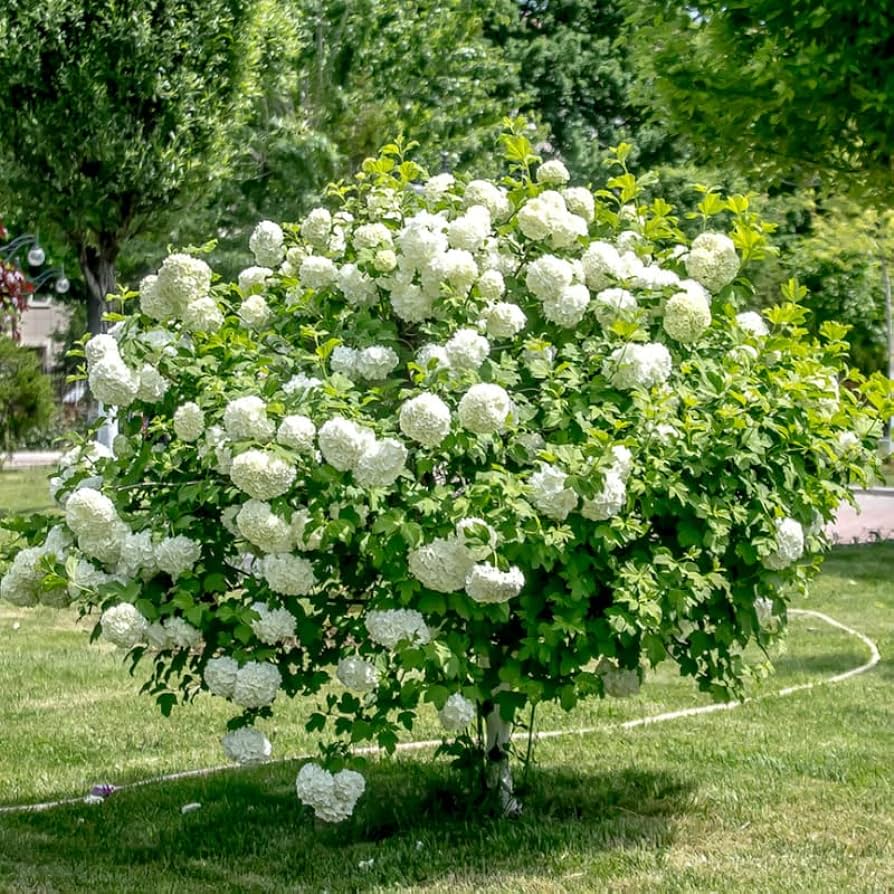
How to Plant and Grow Snowball Bush (Viburnum opulus ‘Roseum’)
Ideal Environment:
Snowball bushes thrive in USDA hardiness zones 3-8, where the average minimum temperature ranges from -40°F to 20°F. They prefer full sun to partial shade, with at least four hours of direct sunlight each day for optimal blooming.
The ideal soil for a snowball bush is well-draining and can be sandy, loamy, or clay. The soil pH can range from acidic to alkaline, but a neutral pH is generally best. Regular watering is crucial, especially during dry spells, but avoid waterlogging the soil.
Planting Process:
- Location Selection: Choose a location that receives full sun to part shade. Ensure there’s enough room for the bush to grow; it can reach up to 12 feet in both height and spread.
- Digging the Hole: Dig a hole twice as wide and just as deep as the root ball of your snowball bush.
- Soil Preparation: If your soil is heavy clay or very sandy, improve it by adding organic matter like compost or well-rotted manure. This enhances the soil structure and its ability to hold onto nutrients and moisture.
- Planting the Bush: Place the bush in the hole, making sure the top of the root ball is level with the soil surface. Backfill the hole with the improved soil, firming gently as you go to remove air pockets.
- Watering: Water thoroughly after planting, and mulch around the base to conserve moisture and suppress weeds.
Care and Maintenance:
- Watering: Water regularly, about once a week, more during hot, dry spells.
- Fertilizing: Feed with a slow-release, granular fertilizer in early spring before new growth begins.
- Pruning: Prune immediately after flowering, removing old wood and thinning out overcrowded branches.
Pest Control and Disease Management:
Snowball bushes can be affected by pests like aphids and diseases such as leaf spot or powdery mildew.
- Aphids: Spray with a strong jet of water to dislodge them or use an insecticidal soap.
- Leaf Spot: Ensure good air circulation and avoid overhead watering. If the problem persists, use a fungicide.
- Powdery Mildew: This is often due to dry roots and damp leaves. Water at the base rather than from above, and ensure good air circulation.
In case of severe or persistent problems, consult a local horticulturist or agricultural extension service. With proper care, your Snowball Bush will be a showstopper in your garden, providing spectacular blooms year after year.
What Are The Different Types of Snowball Bushes
| Type of Snowball Bush | Botanical Name | Description | Bloom Time | USDA Hardiness Zone |
|---|---|---|---|---|
| European Snowball Bush | Viburnum opulus ‘Roseum’ | This variety is known for its large, round clusters of white flowers that resemble snowballs. It can reach up to 10-15 feet in height. | Spring (May-June) | 3 to 8 |
| Chinese Snowball Bush | Viburnum macrocephalum | This type features larger blooms and can grow up to 20 feet tall. The flowers start as green buds, then turn white as they mature. | Spring to early summer | 6 to 9 |
| Japanese Snowball Bush | Viburnum plicatum | Known for its tiered horizontal branches and larger distance between blooms. It grows up to 8-15 feet in height. | Late spring to early summer | 5 to 8 |
| Smooth Hydrangea or Annabelle | Hydrangea arborescens ‘Annabelle’ | Though not a viburnum, it’s often called a snowball bush because of the large, round white flower clusters. It typically grows 3-5 feet tall. | Summer (June to September) | 3 to 9 |
Where Do Snowball Bushes Grow Best?
Snowball bushes (Viburnum opulus ‘Roseum’) grow best in areas with full or partial sun and well-drained soil. They are adaptable to different types of soil, including acidic or alkaline, but they flourish most in a loamy environment. The ideal soil pH for these bushes is around neutral.
These bushes are fast-growing and have a growth rate of almost 2 feet per year under the best growing conditions. They have dark emerald-green leaves similar to those of maple trees.
Snowball bushes can be planted either in the spring or fall and are best suited to areas that experience cold winters and warm summers. To help your plant acclimate to the outdoors, initially move it to a protected area.
For best blooming, it’s recommended that your snowball bush receives about 6 hours of sun daily. While they do well in some shade, full sun to part shade is optimal.
When to Prune and Trim Snowball Bush?
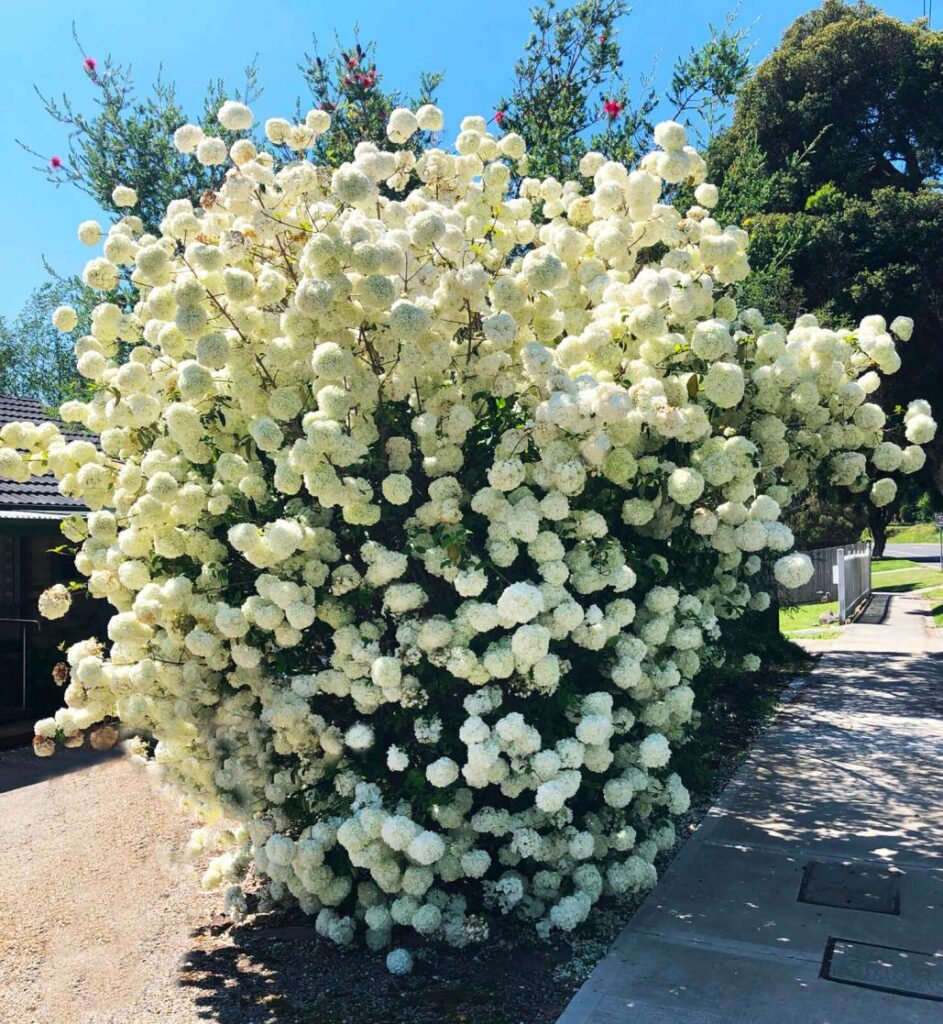
The best time to prune and trim a Snowball Bush (Viburnum opulus ‘Roseum’) is right after it has finished blooming in the spring. Typically, these bushes bloom in May, so pruning should be done immediately after the flowers have faded and turned brown.
Pruning at this time allows the plant to develop new growth throughout the summer, which will then produce the following year’s blooms. If you prune later in the year, you risk cutting off this new growth and reducing the number of flowers the bush will produce.
When pruning, you can remove old, thick stems to rejuvenate the shrub. If you have an Annabelle variety, you can cut branches back to between 4 and 10 inches tall each year; pruning closer to the ground encourages fewer, larger flowers.
Remember, heavy pruning should only be done immediately after blooming, but light pruning for shape or size control can be done as needed.
How Much Water Does Snowball Bush Need?
A Snowball Bush generally requires a regular watering schedule for optimal growth. The frequency of watering can depend on various factors such as the climate and soil type.
As a rule of thumb, you should thoroughly water the plant every couple of weeks. However, if you notice that the surroundings of the bush are dry, you may need to water it more frequently.
During hot, dry periods, the plant should be watered regularly, preferably once a week. It’s important to keep the soil evenly moist throughout the year.
After the plant is well established, it typically needs at least an inch of water weekly. For newly planted bushes or during the establishment phase, it is recommended to water deeply 2 to 3 times per week.
Remember, while the Snowball Bush is somewhat drought-tolerant, it performs best when watered regularly. Also, although the plant requires moist soil, ensure that the ground is well-drained to prevent waterlogging.
In all cases, adding a thick layer of mulch around the base of the bush can help preserve moisture.
Snowball Bushes in Winter
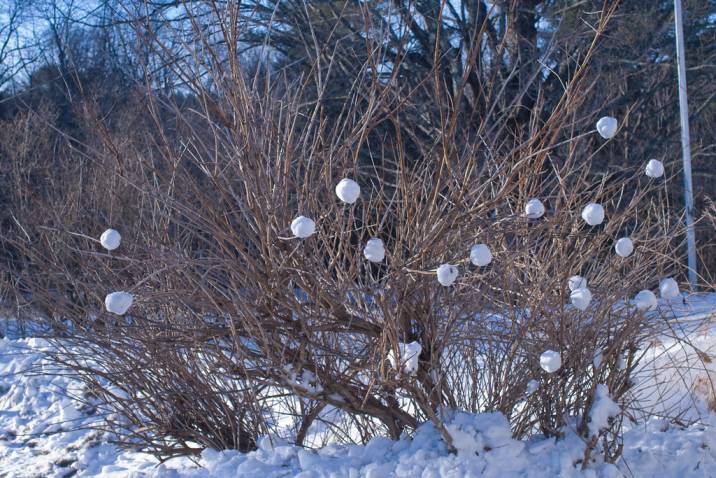
Snowball bushes are quite hardy and can tolerate a range of winter conditions depending on the specific variety.
The snowball bush can withstand the freezing winter temperatures of zone 6 and can also endure summer heat down to zone 8. Some varieties, such as the snowball hydrangea, can even survive in colder climates, thriving in USDA Hardiness Zones 3-9, which means they can survive winter temperatures down to -40°F.
It’s important to note that while some types of Viburnum (also known as Snowball) remain green in winter, there are semi-evergreen varieties and others that lose all their leaves during the winter months. For instance, the Chinese snowball viburnum is semi-evergreen in the warmest growing zones.
The snowball bush is a deciduous plant, meaning it sheds its leaves during the winter. However, it comes back every year, blossoming into full white blooms that welcome spring.
Pruning of snowball hydrangeas should be done after the first frost in fall or winter. This helps to prevent any potential damage from cold weather and encourages new growth in the spring.
Remember, each variety of snowball bush may have slightly different care requirements, so it’s always a good idea to research the specific needs of your plant.
What Are the Common Problems With Snowball Bushes?
Sure, here are some common problems that can occur with Snowball Bushes:
- Powdery Mildew: This is a common fungal disease that appears as a white powdery substance on the leaves of the plant. It can be managed by ensuring good air circulation around the plant and treating it with fungicides if necessary.
- Aphids: These tiny insects suck the sap from the leaves, causing them to curl and distort. They can be controlled with insecticidal soap or other suitable insecticides.
- Scale Insects: These are small insects that attach themselves to the branches and stems of the plant, sucking out the plant’s juices. They can be managed by introducing beneficial insects like ladybugs or using horticultural oils.
- Spider Mites: These tiny pests can cause yellowing or bronzing of leaves. They can be treated with miticides or by regularly spraying the plant with water to dislodge them.
- Leaf Spot Diseases: These are caused by various fungi or bacteria, resulting in spots on leaves. Proper sanitation, such as removing and disposing of affected leaves, can help control these diseases.
- Viburnum Crown Borers: These pests bore into the base of the snowball bush, causing wilting and dieback. Control can be achieved by keeping the plant healthy and applying appropriate insecticides.
- Fertilizer Burn: Over-fertilizing can lead to fertilizer burn, which can cause leaf scorching and root damage. To avoid this, follow the recommended fertilization rates and schedules.
- Poor Drainage: Snowball bushes prefer well-drained soil, and waterlogged conditions can lead to root rot. Ensure the planting site has good drainage to prevent this problem.
Is a Snowball Bush and a Hydrangea the Same Thing?
No, a snowball bush and a hydrangea are not the same thing, although they can often be confused due to their similar-looking flower clusters.
| Snowball Bush (Viburnum) | Snowball Hydrangea (Hydrangea arborescens) | |
|---|---|---|
| Botanical Name | Viburnum opulus ‘Roseum’ (most common variety) | Hydrangea arborescens ‘Annabelle’ |
| Common Names | European Snowball Bush, Roseum | Smooth Hydrangea, Annabelle |
| Origin | Europe | United States |
| Flower Appearance | Large, round clusters of white flowers that resemble snowballs | Large balls of white flowers, also similar to snowballs |
| USDA Hardiness Zone | 3 to 8 | 3 to 9 |
| Height | 10-15 feet | 3-5 feet |
| Bloom Time | Spring (May-June) | Summer (June to September) |
A snowball bush is typically a Viburnum, while a snowball hydrangea is a Hydrangea. Both are different genera within the larger plant family.
Snowball Bush (Viburnum):
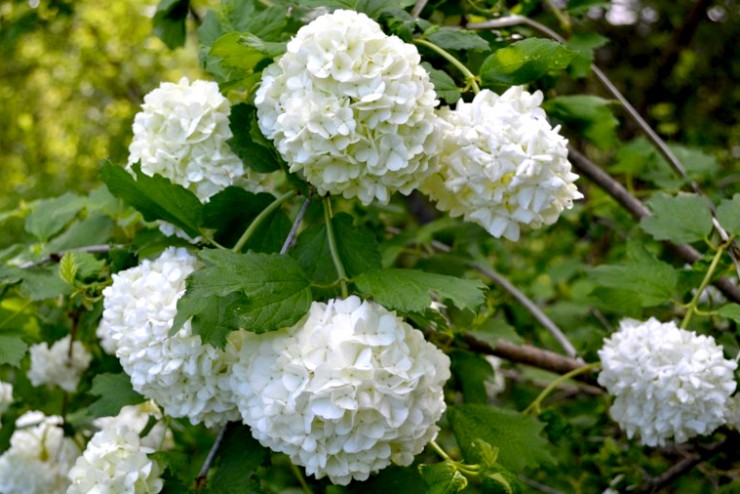
The most common is the European Snowball Bush, which is also known as Roseum, according to Missouri Botanical Garden. It produces large snowball-like clusters of white flowers.
Hydrangea (Hydrangea arborescens):
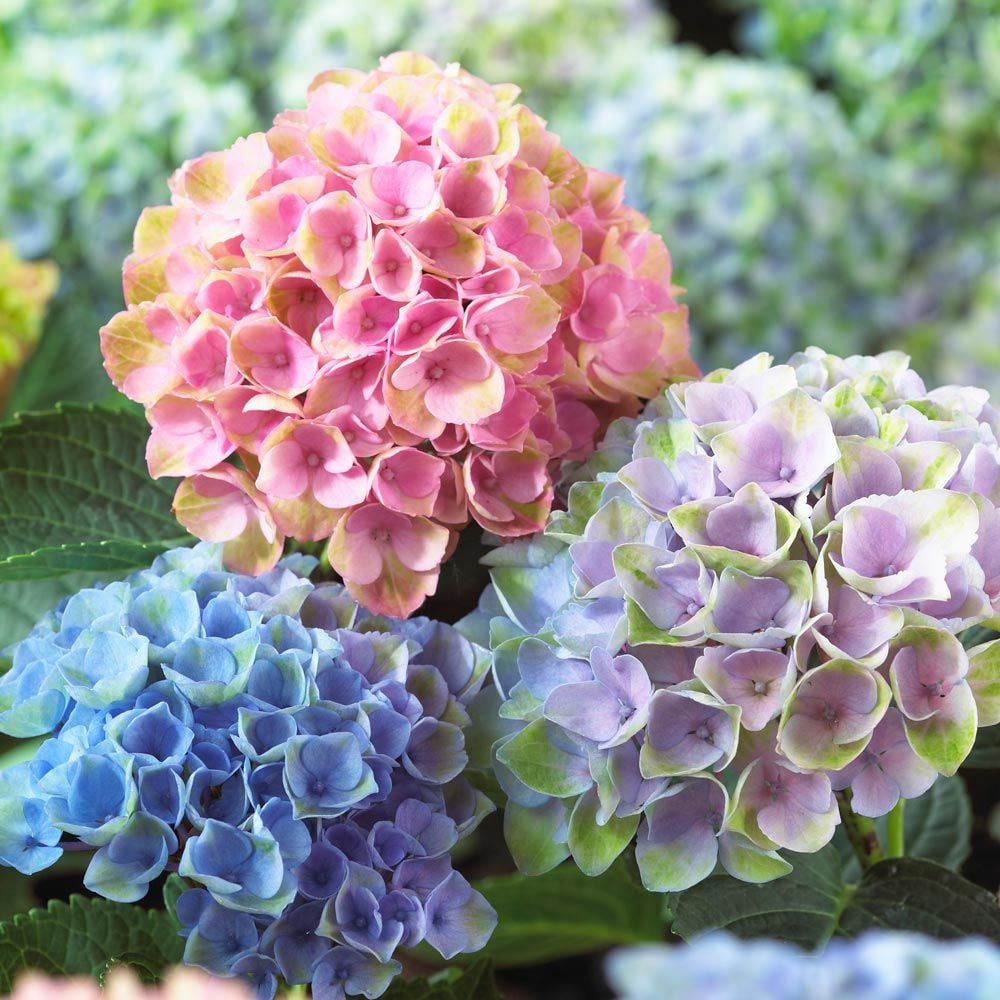
Often referred to as the Smooth hydrangea or Annabelle, this plant produces large balls of white flowers, and it’s a different species from the snowball bush. It’s native to the United States rather than Europe and prefers slightly different growing conditions.
While both have similar appearances with their stunning white, ball-shaped flowers, they are different types of plants.
Interesting Landscape Ideas for Snowball Bush
| Landscape Idea | Details |
|---|---|
| Mixed Shrub Border | Plant your Snowball Bush alongside other shrubs of varying colors, heights, and textures. This can create a visually interesting border or backdrop for your garden. |
| Stand-Alone Specimen | With its striking, large white blooms, a Snowball Bush can serve as a stand-alone specimen plant. This could be a focal point in your garden or yard. |
| Wildlife Attractant | The Snowball Bush produces berries that attract birds and other wildlife. Consider planting it in an area where you can enjoy watching these visitors. |
| Natural Privacy Screen | Given their height and dense growth, Snowball Bushes can be used to create a natural privacy screen or windbreak. They can also be used to mask unsightly aspects of your yard. |
| Entryway Accent | Plant a Snowball Bush on either side of your entryway or driveway for an elegant, welcoming touch. When in bloom, they can add a dramatic effect. |
| Container Planting | If you have limited space, consider planting a Snowball Bush in a large container. This allows you to enjoy its beauty on a patio or balcony. |
| Theme Garden | Use Snowball Bushes in a white-themed garden, where all plants produce white flowers or have white variegation. This creates a peaceful, moonlit effect, especially at dusk. |
Where to Buy Snowball Bush?
- Home Depot
- Amazon
- Lowe’s
- Wilson Bros Gardens
- Walmart
- Greenwood Nursery
- Wholesale Nursery Co
- The Greenhouse PNW
- TN Nursery
- Planting Tree
What Does Snowball Bush Symbolize?
| Symbolic Interpretation | Explanation |
|---|---|
| Purity | The snowball bush’s white flowers can symbolize purity, innocence, and clarity. White blooms are often associated with these concepts in floral symbolism. |
| Transition and Change | The snowball bush blooms in spring, a time of transition and change. This could make it a symbol of new beginnings, growth, and transformation. |
| Joy and Optimism | The large, bright blooms of the snowball bush could be seen as a representation of joy, celebration, and optimism. |
| Endurance and Longevity | Given that the snowball bush is a hardy plant that can survive in various climates, it could symbolize endurance, resilience, and longevity. |
| Unity and Connection | The clusters of small flowers that form the ‘snowball’ could symbolize unity, community, and connection, representing parts coming together to form a whole. |
The Pros and Cons of Snowball Bush
Advantages:
- Aesthetic Appeal: The snowball bush’s large white blooms are visually striking and can add a dramatic touch to your landscape.
- Hardiness: These plants are quite hardy and can tolerate a range of soil conditions and climates (USDA zones 3-8).
- Wildlife Attraction: Snowball bushes can attract various types of wildlife, including birds and butterflies, which can help pollinate other plants in your garden.
- Versatility: Can be used as a stand-alone specimen, in mixed borders, as a privacy screen, or even in large containers.
- Low Maintenance: Once established, snowball bushes typically require minimal care beyond occasional watering and pruning.
Disadvantages:
- Size: Snowball bushes can grow quite large (10-15 feet tall), which could be a problem if space is limited.
- Pruning Requirements: To keep the plant looking its best, you’ll need to prune it regularly, which can be a bit labor-intensive.
- Invasive Potential: Some varieties of viburnum can become invasive in certain areas, so it’s important to check with local guidelines before planting.
- Lack of Fall Color: Unlike some shrubs, snowball bushes don’t offer much in the way of fall color. Their leaves typically just turn a dull yellow before dropping.
10 Best Snowball Bush Alternatives
| Plant | Description |
|---|---|
| Hydrangea | Hydrangeas have large, round flower clusters similar to those of the snowball bush. They come in a variety of colors including white, pink, and blue. |
| Rhododendron | Rhododendrons are known for their large, vibrant flowers. They’re also evergreen, providing year-round interest. |
| Lilac | Lilacs are famous for their fragrant, purple flowers. They’re a great option if you want a highly aromatic plant. |
| Mock Orange | Mock oranges have beautiful white flowers that smell like citrus. They can grow quite large and make an excellent focal point. |
| Magnolia | Magnolias are known for their large, showy flowers and glossy green leaves. Some varieties stay small, making them suitable for smaller gardens. |
| Weigela | Weigelas are hardy shrubs with trumpet-shaped flowers that attract hummingbirds. They come in a variety of colors. |
| Forsythia | Forsythias are one of the first plants to bloom in spring, producing bright yellow flowers. They’re very hardy and easy to care for. |
| Azalea | Azaleas are evergreen or deciduous shrubs that produce a profusion of colorful flowers in spring. They prefer acidic soil. |
| Rose of Sharon | Rose of Sharon is a type of hibiscus with large, showy flowers. It’s a late-summer bloomer and comes in several colors. |
| Peony | Peonies are perennial plants that produce large, fragrant flowers. They’re available in a range of colors and can live for many years with proper care. |
Frequently Asked Questions
1. Can I grow Snowball Bush indoors?
Snowball Bushes (Viburnum opulus ‘Roseum’) are typically grown outdoors as they can reach a height of 10 to 15 feet and spread out up to 12 feet. However, it is possible to grow them indoors with the right conditions and care.
Here are some tips:
- Pot Size: Choose a large pot that can accommodate the root system of the plant. As the plant grows, you may need to repot it into a larger container.
- Lighting: Snowball bushes require full sun to partial shade. So, place your snowball bush by a large, south-facing window where it will get plenty of light.
- Watering: Water your snowball bush regularly. The soil should be kept moist but not waterlogged. Overwatering can lead to root rot.
- Pruning: Regular pruning will be necessary to control its size and shape when grown indoors.
- Temperature: They prefer cooler temperatures, so try to maintain a cooler environment, especially during winter months.
- Feeding: Use a slow-release granular fertilizer in spring and summer. Follow the instructions on the label for application rates.
Remember, indoor plants will not grow as large as their outdoor counterparts. Also, they might not bloom as profusely due to less exposure to sunlight.
2. Is Snowball Bush hardy?
Yes, the Snowball Bush (Viburnum opulus ‘Roseum’) is indeed a hardy plant. It can withstand temperatures down to USDA hardiness zone 3, which means it can tolerate winter temperatures as low as -40 degrees Fahrenheit or -40 degrees Celsius.
In addition to its cold hardiness, the Snowball Bush is also tolerant of a variety of soil types, including clay, loam, and sand. It can handle soil pH from highly acidic to highly alkaline. It’s also resistant to most pests and diseases, making it an excellent choice for gardeners looking for a low-maintenance shrub.
However, like any plant, it does have optimal growing conditions. It prefers well-draining soil and a location with full sun to partial shade. Although it’s drought-tolerant once established, it will thrive best with regular watering and a layer of mulch to help retain soil moisture.
Also read:
- Liriope: How to Plant, Grow, and Care
- Needlepoint Holly: How to Plant, Grow, and Care
- Firepower Nandina: How to Plant, Grow, and Care
- Hicks Yew Hedge: How to Plant, Grow, and Care
- Rose Creek Abelia: The Compact Evergreen Charm
- Junipers: Exploring the Many Types of This Versatile Plant
- Wisteria Vine & Tree: Tips for Growing and Planting Wisteria
